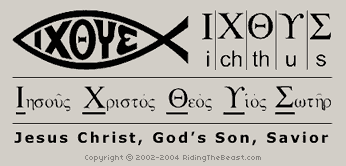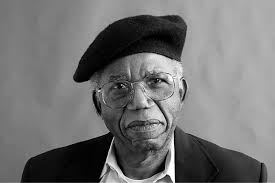
After reading chapters 5 to 8, of “The Inconvenient Indian” I noticed that King shifted his narrative of the book. Rather than writing about the portrayal of Natives in the media, King focused his attention on the extermination and assimilation process of Natives in Western history. In my opinion, this portion of the book was more intriguing than the previous because it dealt with more difficult and heartbreaking topics. To help express his factual viewpoint, I found that King used a few but notable archetypes that symbolize the injustice Aboriginals have faced since colonization.
The first archetype I noticed was King’s repetitive mention of fish. Christians use fish to represent Jesus’ charity and kindness. however; King uses the symbol in a sarcastic tone. For example, he stated that Natives who fought alongside with England, were never included in crucial negotiations, like the “Treaty of Paris” that ended the American Revolution. King then impersonated a European settler to show their derogatory attitude towards the First Nations people at the time: “So long and thanks for all the fish” (King 100). In this case, he used the term “fish” explain how colonizers took advantage of the Natives for their beneficence but did not reciprocate their gratitude back. King further illustrates this archetype when describing the colonizers attempt to “civilize” the First Nations people, “Teach indians to fish. But teach them to be Christian fishers. And then you can sell them the fishing gear”(King 101). When paraphrased, this shows how Europeans disguised their intentions of “modernizing” Aboriginals as a method of improving their lifestyle. In reality, they wanted to teach them profitable jobs so they could contribute to their economy. In my opinion, I like how King sarcastically used the term fishes, it definitely forced me to apply my limited knowledge of the Christian faith to understand his viewpoint.
 The hermeneutics behind the Biblical archetype of fish.
The hermeneutics behind the Biblical archetype of fish.
Ironically, the church embodies the archetype of a villain in this novel. I found this funny considering Christianity’s teachings were founded upon pacifist and loving principles. Churches from various denominations played a role in the murdering and mistreatment of Natives. For example, King explained the atrocity of residential schools. These religious institutions were government-sponsored and were established to assimilate Indigenous children into Euro-Canadian culture (King 121). This mindset was evidently racist – in the church’s perspective “…white culture was the right way to discipline a native child” (King 121). Not only were these schools racist but they were poorly funded and unsupervised. Thus, students faced issues uses of malnutrition, sexual abuse and physical abuse from their teachers and church elders. Church officials did nothing to solve these problems and by doing so, they further portrayed an archetype of a villain. One of the most shocking facts King stated was that “50% of residential students died from starvation, abuse or disease”(King). Similar to a villain, many of these religious criminals felt little remorse for their actions For example Paul Leroux, a Christian teacher who molested a dozen former students at the Beauval Indian Residential school in the 1960s pleaded not guilty during his trial and accused his victims of being “misguided” (King 131).
Lastly, King used Elijah Harper to portray the archetype of a hero. I enjoyed how he introduced him as an influential figure for all First Nation people because he was the first Treaty Indian to be elected as a provincial politician. One of Harper’s heroic acts was his refusal to accept the Meech Lake Accord, a constitutional amendment package negotiated to gain Quebec’s acceptance of the Constitution Act, 1982, because the “First Nations had not been consulted or recognized in the constitutional discussions around the Accord” (King 160).
 A photo of Elijah Harper
A photo of Elijah Harper
The Manitoba premier at the time, Gary Filmon, needed all Members of the Legislative Assembly to approve the procedure to legislate the accord but Harper refused to give consent after being asked over eight times (King 165). Harper faced a lot of backlash from non-native Canadians but still remained firm on his decision. Next, King commended his bravery for attempting to run in a federal election due to the fact that no Native has ever tried before. Unfortunately, Harper was not able to win the position of the NDP leader but continued to remain a member of parliament. I know many readers may view his accomplishments as mundane however; Harper paved the way for future Aborginals aspiring to become active members of parliament.
Overall, the author’s use of archtypes effectively enhanced my reading experience . I definitely look forward to reading the last portion of this book!
King, Thomas. The Inconvenient Indian illustrated: a curious account of native people in North America. Doubleday Canada, 2012.
Advertisements Share this:




